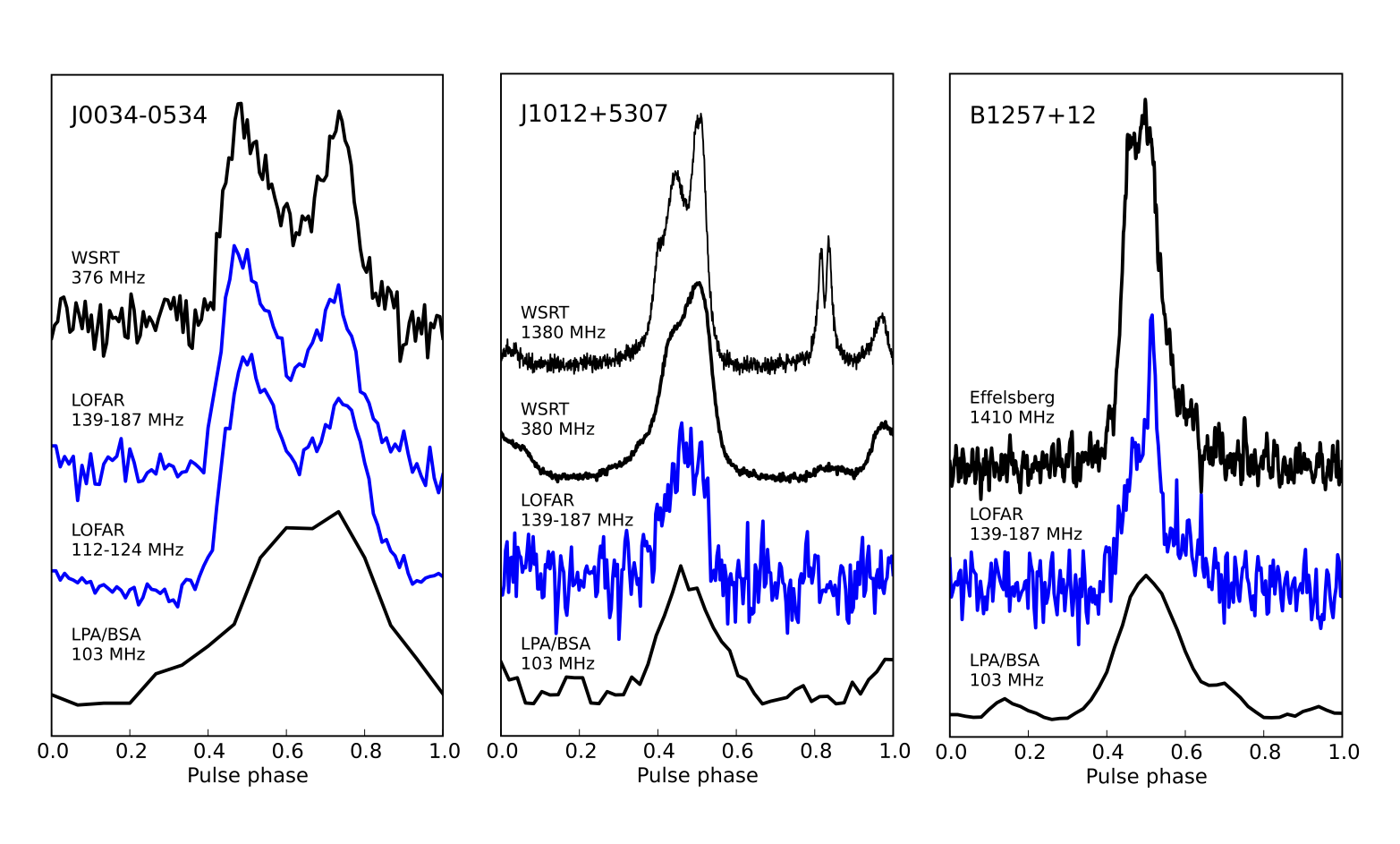Daily Image
21-02-2012Perfecting the Timing of Millisecond Pulsars, Nature's Near-Perfect Clocks
| Submitter: | Jason Hessels and Vlad Kondratiev on behalf of the LOFAR Pulsar Working Group |
| Description: | The Beam-Formed modes of LOFAR v1.0 offer online coherent dedispersion, which is crucial for observing millisecond pulsars at low radio frequencies. Such observations have the potential to provide a powerful characterization of propagation effects in the interstellar medium. These effects reduce the precision with which we can "time" millisecond pulsars. LOFAR is ideally suited for studying propagation effects, such as dispersion and scattering, because they become very pronounced towards low frequencies. If we can do a better job of characterizing and correcting these systematic effects, then we can turn these pulsars into even better high-precision clocks. Various "Pulsar Timing Array" (PTA) projects are currently using millisecond pulsars as the arms of a vast gravitational wave interferometer. If adequate timing precision can be achieved (< 100ns "timing residuals" for roughly 20 sources) then the prospects are excellent for direct detection of gravitational waves with micro-Hz to nano-Hz frequencies (e.g. from the gravitational wave background of the Universe). Below are recently acquired LOFAR observations of millisecond pulsars (blue profiles), compared with some archival profiles at other frequencies. We intend to use such data to constrain/model propagation effects, with the ultimate goal of improving pulsar timing precision at higher observing frequencies. Left: PSR J0034-0534 (P=1.88ms, DM=13.8pc/cc): Comparison of LOFAR observations with a WSRT 376-MHz profile shows that a small scattering tail becomes visible at the bottom of the LOFAR high band (112-124-MHz profile). Center: PSR J1012+5307 (P=5.26ms, DM=9.0pc/cc): This is a high-priority PTA pulsar and was used as part of the gravitational wave background limit derived by van Haasteren et al. 2011. Right: PSR B1257+12 (P=6.22ms, DM=10.2pc/cc): The famous ``Planet Pulsar" shows an extremely narrow profile feature at LOFAR frequencies (each bin is ~20 microseconds wide). |
| Copyright: | ASTRON |
| Tweet |  |
